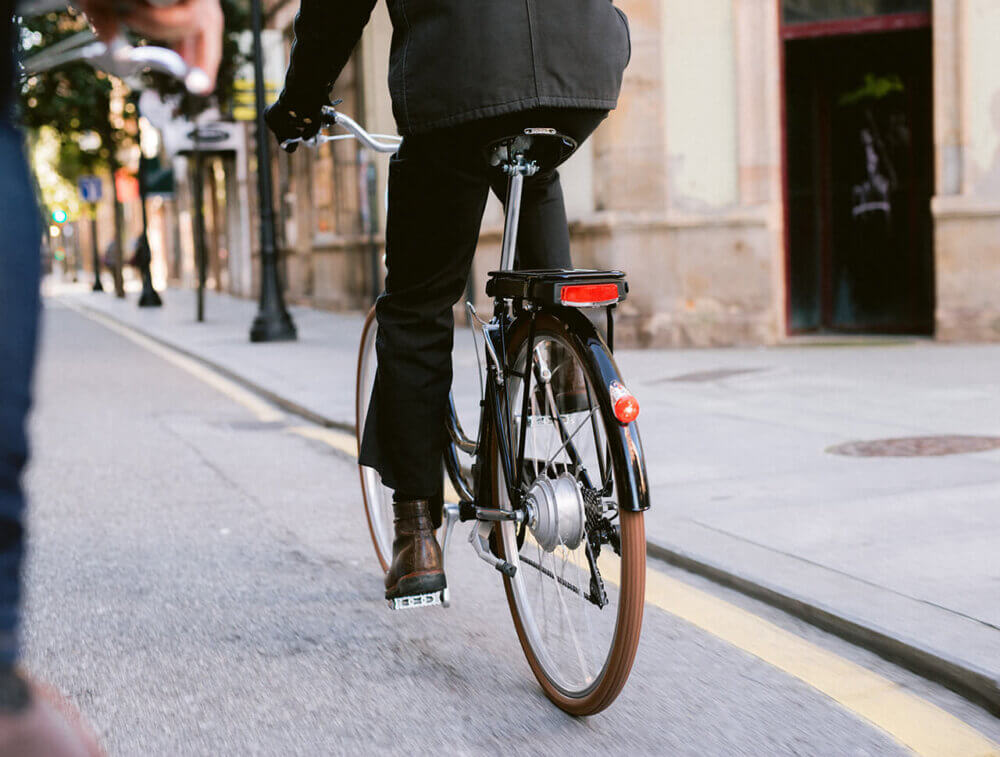Is cycling safe in the city?

The truth is that every day, in Biciclasica we meet more than a few people who, despite their manifest desire to getting around the city on a bicycleWhether to go to work or to run errands, they show significant reluctance to take the step (or rather the pedal stroke).
Some of these people do not dare to move more by bike for various reasons (inclement weather, the demands of the route …) but the truth is that there is one reason that stands out above the rest overwhelmingly: fear of cars.
We imagine that we are not discovering anything when we say that most people who would like to move around the city by bike and finally do not do it, give up because they consider it dangerous.
At Biciclasica we receive many questions every day about whether cycling in the city is safe or not.
The truth is that in almost 100% of the cases this feeling of danger is due to a single factor: cars.
According to an internal Capri Bikes survey, 41% of people who expressed a desire to cycle to work but ultimately ruled it out did so because of “fear of cycling in the city.”
“Investing more time getting to work” is the second major reason. A motive that, without going into further details, is far from reality.
In fact, in most cases it is completely wrong. With the data in hand, one can easily crunch the numbers to dismantle an idea that, for the most part, turns out to be wrong:
- 1. The work – home distance is, on average, about 5 kilometers.
- 2. the average speed of the car in town is only about 15 km/h (9 mph).
But let’s go back to the main reason that prevents thousands of people who want to enjoy cycling in their daily lives: is it safe to move around the city on a bicycle?
Obviously, not all cities are the same but, in general, and as we will demonstrate in this article, based on public data, the answer is yes: and especially if you know how to do it.

What do we mean by knowing how to do it? Recently, Europe’s number one classic bike portal “Biciclasica.com”, published an article with a series of tips for cycling to work in the city. Undoubtedly, these tips are the basic starting point to make the experience of cycling in the city as safe as possible.
Before going into why we argue that cycling in the city is perfectly safe based on the data available to us, it is important to dwell on these tips because it rests on them, as we will see below, the real key to urban cyclist safety in the city.
Analyzing general data from entities such as the DGT, City Councils such as those of Madrid or Barcelona and public data portals such as “…”, we have found that the data is not available in all countries.Epdata“We extract some insights that help us understand the reality of cyclist safety in the city, which is diametrically different from that of cyclists on inter-urban roads. (national roads)to give a clear example.
The first is that more and more people are using bicycles (the percentage of people who say they use bicycles with some frequency in Spain rose from 41.3% in 2008 to 50.7% in 2019)
Fortunately, however, there are fewer and fewer fatalities (from 145 in 1993 to 49 in 2011).
Most significantly, the vast majority of bicycle accident victims occur on interurban roads, i.e. national roads, outside the city.

In the city of Madrid, with scarce and poorly planned bike lanes, a total of 7 cyclists died between 2010 and 2017. The average is one per year.
Obviously, this statistic includes sports cyclists, who are the most at risk and who actually suffer practically the total number of accidents, injuries and fatalities.
The perception that cycling in the city is a dangerous mode of transport is not supported by the data.
Compared to motorcycles (which account for 1 out of every 4 accidents in the city!) the difference in safety is beastly and is more than evident with a ratio of mopeds to bicycles of 13.44 to 1.
If we delve deeper into the analysis of bicycle accidents in the city, we find much more significant data.
To begin with, according to data from the DGT, we find that a quarter of bicycle accidents involve people under 18 years of age. In a profile that has little to do with that of an urban cyclist who uses the bike as a means of commuting to work. And the statistic goes up to one third if we are talking about people under 20 years of age!
In addition to this age imperative, it is worth noting that almost 75% of accidents involving a cyclist have been directly caused by the cyclist himself, or have involved what the DGT calls “convenient collaboration”. In other words, cyclists have had some degree of responsibility in about three quarters of the accidents they have suffered.
Is it safe to ride a bike in the city? From our own experience and after thoroughly analyzing the various data available to us, we are convinced that yes, it is safe. To do so, we invite you to review the essential tips to do it safely and confidently.